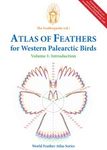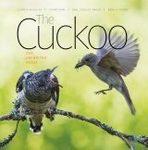![The Inner Bird The Inner Bird]()
Click to have a closer look
About this book
Contents
Customer reviews
Biography
Related titles
About this book
Birds are among the most successful vertebrates on Earth. An important part of our natural environment and deeply embedded in our culture, birds are studied by more professional ornithologists and enjoyed by more amateur enthusiasts than ever before. However, both amateurs and professionals typically focus on birds' behaviour and appearance and only superficially understand the characteristics that make birds so unique.
The Inner Bird introduces readers to the avian skeleton, then moves beyond anatomy to discuss the relationships between birds and dinosaurs and other early ancestors. Gary Kaiser examines the challenges scientists face in understanding avian evolution – even recent advances in biomolecular genetics have failed to provide a clear evolutionary story. Using examples from recently discovered fossils of birds and near-birds, Kaiser describes an avian history based on the gradual abandonment of dinosaur-like characteristics, and the related acquisition of avian characteristics such as sophisticated flight techniques and the production of large eggs.
Such developments have enabled modern birds to invade the oceans and to exploit habitats that excluded dinosaurs for millions of years. While ornithology is a complex discipline that draws on many fields, it is nevertheless burdened with obsolete assumptions and archaic terminology. The Inner Bird offers modern interpretations for some of those ideas and links them to more current research. It should help anyone interested in birds to bridge the gap between long-dead fossils and the challenges faced by living species.
Contents
Part 1: What is a bird?
1 A bird is a pedestrian puppeteer
2 A bird is an animal with hollow bones
3 A bird is like a dinosaur
4 A bird is not so like a dinosaur
Part 2: What kind of bird is it?
5 A family tree for birds
6 That bird is different from the other one
Part 3: How does a bird fly?
7 Feathers and feathered dinosaurs
8 Birds with a modern shape
9 Birds on land
10 Birds at sea
Conclusion
Customer Reviews
Biography
Gary W. Kaiser has worked as a biologist for Environment Canada and the Nature Conservancy of Canada, and as an independent researcher. He is a co-author of the 4-volume Birds of British Columbia.
By: Gary W Kaiser(Author)
386 pages, b/w illustrations, tables
"This volume stands out from the plethora of books on birds by concentrating on structural makeup and how structural modifications make one group of birds different from others. [...] It is an altogether welcome offering by an eminently qualified writer. [...] Summing up: Highly recommended."
– H.N. Cunningham, Jr., Choice, Vol. 45(1)
"This book comprehensively covers the internal structure of birds with respect to many aspects of their life history and evolution from reptiles, with an emphasis on the skeleton. [...] Kaiser has emphasized, in the title The Inner Bird, a significant area of avian biology that has been little considered over the past decades, and one that must be given more attention if we are to fully appreciate all aspects in the life of birds. [...] I can recommend his book to ornithologists as an entrance into this fascinating area of avian biology."
– Walter J. Bock, Columbia University, The Auk, No.126(1)


































